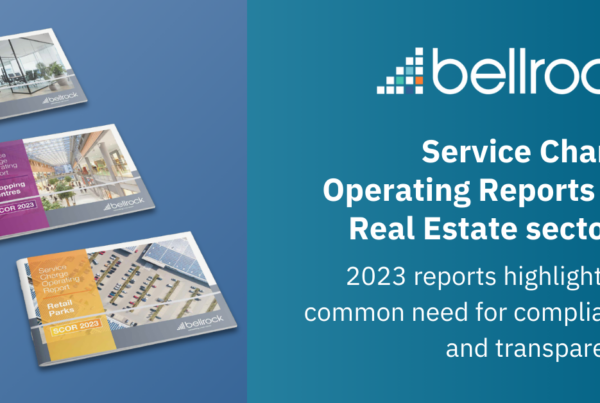Introduction
The Covid-19 has caused a seismic shock to economies and societies across the world. This resulted in what was initially thought a short term shut down of cities, towns, communities, and workplaces with a quick “return to normal”. As with all things in life and the dynamic of societies and economies, unintended consequences have arisen. We are seeing this play out in terms of what has happened over the last six months, the ongoing pandemic, and how this will fundamentally change not just the office and property landscape, but potentially, the entire foundations of cities and towns.
Covid-19
The lockdown, political directives and media “influence” has driven business and most public service providers to close offices, schools, hotels, leisure facilities and the like. Public transport has largely ground to a halt or has continued running half empty. In a world of ever accelerating change, our adaptation to the Covid-19 “shock” and the inexorable advancement of technology has enabled many office and workplace people to continue largely as normal, potentially letting the proverbial “genie out of the bottle” in questioning the property as a meaningful destination.
Anyone heard of TEAMS and ZOOM? Most of us now all converts to these, and we have found, to a large extent, they are a new, different, and effective way of remotely communicating, transacting business, and providing services.
The office as a meaningful destination?
So, is this the end of offices and the property as a meaningful destination? Will cities become ghost towns as employers accept that home working “works”, and office and utility costs can be slashed and productivity increased. Will whole cities and towns collapse over the next five years as home shopping and home working accelerate. Will transport and infrastructure investment need to be fundamentally re-thought. What about the validity of HS2, Trans Pennine Route Upgrade, Northern Powerhouse Rail and Cross Rail? Will regional airports survive?
Sudden mass home working has opened individuals and organisations to a new way of working and work life balance. Based on current surveys, 60% of office workers questioned indicated that post Covid-19, they would want to work from home at least some days each week.
Pros and cons of the “new way”
Simplistically the advantages of home working include:
- Reduce time and daily commuting stress
- More efficient working through avoiding the commute
- Reduced costs (train, bus, car, parking costs) which elevates disposable income
- Improved work life balance
- Climate benefits (reduced emissions, fuel use, congestion, improved air quality etc.
- Transport productivity improved through reduced road congestion
The dis-advantages may include:
- Social isolation (mental health and wellbeing)
- Lack of focus (family and media distractions)
- Motivation (many need face to face managing to provide direction and tasking)
- Lack of suitable home office or workspace
- Detrimental to family life (living ‘on top of each other’ 24/7)
- Adverse work life balance (non-separation of work and home)
- Poor wi-fi, unable to resolve IT issues remotely, access to servers etc.
- Lack of face to face mentoring, coaching for younger or inexperienced people (professional development)
We are social animals!
I believe that whilst the lockdown has shown many positives in “full time” home working, these are short term and unsustainable in the medium and long term. Fundamentally, humans are social animals; we need to exist in social groups that occurs through the workplace at the office or property as work destination. Indeed, 85% of communication is non-verbal and whilst TEAMS and ZOOM are incredibly useful, they are not a panacea for all future working and business.
Work is the corner stone of capitalist society and physical human interaction is vital to this. People need an office or workplace to interact with friends and colleagues, matters of trust, liking and confidence are best done face to face where intuition and body language play out in business life. People need a sense of belonging with the firm or business they work for; working from home will ultimately be detrimental to this.
Businesses build their reputation and achieve growth and profitability through both their workforce interaction with customers but also through their brand. Offices, property, and workplaces are synonymous with this as the workforce is moulded in culture, behaviour, and their collective sense of belonging through physically being together. People develop and grow best where they can be consulted, coached, and mentored face to face. People need physical separation of work and home.
Adapting to change (re-provisioning offices and workplaces)
In summary, the last 6 months has seen short term changes to offices and workplaces. The next 12 months and longer-term outcomes will see fundamental change acceleration of how the property/office can maintain itself as a meaningful destination. This will require landlords and property owners to fundamentally re-provision buildings and to accept that traditional rent and investment models will no longer apply. Everything will need to be re-priced.
In the short term, reconfiguring property to be “Covid secure” is and will be the order of the day (to encourage or persuade employees to return to the workplace. This will include:
- Space planning to reconfigure workstations or desks to provide social distancing
- Occupancy planning around numbers in the workplace at any one time
- Circulation and route planning to keep social distancing
- Amended workplace and HSEQ procedures
- Revised approach to Facilities Management to common areas
- Consideration of HVAC systems and how they operate (to avoid virus spread)
- How face to face meetings are conducted suitability of meeting rooms etc.
- Staff reassurance as to rules and how it will look
Re-provisioning of offices
It means re-pricing of costs to occupiers (rent) and an acceleration of the serviced office type model. Offices and workspaces will need to be re-provisioned for the post-Covid world.
This is likely to include:
- Changed space requirements with reduced number of workstations per floor (due to social distancing)
- Focus on circulation routes and spaces, to maintain social distancing
- Improved front end (entrance and greeting areas) to reinforce brand perception, quality, and client perception in conducting business
- Meeting rooms for periodic team, client and colleague meetings or touch downs (colleague and team meetings) but used flexibility (perhaps larger but fewer overall meeting rooms
- Continued theme of green commuting (bike storage, showers and changing facilities)
- High speed wi-fi
Short and medium term conflict
As leases come to an end and firms alter their space requirements, landlords will need to be ahead of the game. This will drive physical reconfiguration requirements:
- Altering floor plates sizes, common parts and means of escape
- Changes to quality of the entrance and front-end common space
- Changes to HVAC, electrical and fire alarm zoning
- Means of escape changes
- Improving meeting space quality (media walls FFE etc)
- More informal soft touch down space
- Adaptive workstations and touch down areas
- On-line booking systems and dynamic space management
- Lift use, especially in hi-rise offices (limited occupancy)
Technology supporting re-provisioning
The Internet of Things (IoT) enables provision of varied and aggregated IOT sensors to manage offices and workplaces remotely, including M&E systems (BMS) and occupancy. This can be done by remote monitoring of space occupancy and environment, humidity, light, and movement. The application of environmental sensors, linked to occupancy sensors and location sensors, allow offices to remotely monitor how many people are in a building/area, how the local environment is affected and where occupiers are, tracking the way spaces are being navigated.
A data driven approach to managing property assets, enables property managers to control when and where maintenance professionals access a building.
The above optimises the use, service and flexibility offered by a property, whilst minimising costs.
The physical workstation (adapting to social distancing and well-being)
The post Covid workplace will evolve in phases. Density, circulation, and interaction will be the focus in the context of social distancing. We are seeing the first phase now, with offices and other workplaces being hurriedly configured to introduce social distancing, and for those who cannot work remotely.
People still need to meet and have social contact. So, in the short- term, collaborative spaces will need to provide safe ways to screen and shield workers. Shared surfaces will need to be clear, clean and occupancy density decreased, whilst circulation space will need to be choreographed and the capacity of meeting rooms will need to be reduced. The solution is not to focus solely on the amount of space the organisation uses but find the balance between effective but safe collaboration and interaction.
Specific measures may include:
- Replan the workplace including general workstations, meeting rooms, break out space etc. to provide social distancing
- Reduce density – increase circulation space or reduce the occupancy of existing benches and workstations
- Screens and shields – to contain the work setting to protect the user
- Balance the need for natural light with protection to avoid a return to the old-style cubicle
- As easy-to-clean shielding will be the priority, floors and ceilings will need to perform well acoustically to counteract a higher number of hard surfaces
- Reduce the density of meeting rooms
- Provide more solo and individual focus settings
- Provide lockable personal storage
- Reduce shared resources and equipment
- Air conditioning – air circulation/temperature/use of windows (researched and optimised)
- Apply a clear desk policy to assist with cleaning and reduce the risk of contamination
- Uphold hygiene levels on all workstations, especially those that are used by more than one user (where hot-desking is not in use)
- Provide flexibility so that the space can adapt to the changes to the virus and our ability to contain and combat it
The challenge of both landlords and occupiers is to collaboratively create a new working culture around the physical, mental, and digital spaces to support it. Flexibility will be vital as government guidance and directives change
Summary
In summary “the property and estate as a workplace” will need to be re-positioned and re-provisioned in the post Covid world as its place as a meaningful destination will remain relevant. It will change and evolve to survive but its continued place at the core of the capitalist western economy remains essential to the ongoing evolution and prosperity of our cities and towns. How we move forward will also be as much about ‘hearts and minds’.
Neil Triggs BSc. (Hons) FRICS
Head of Technical
Technical & Real Estate






